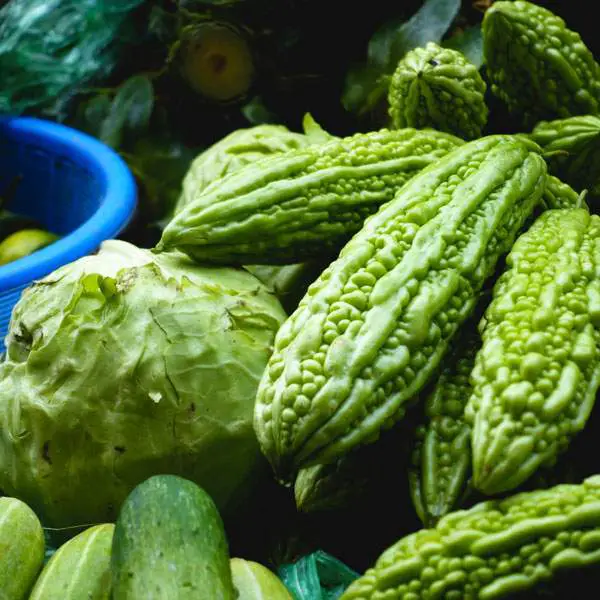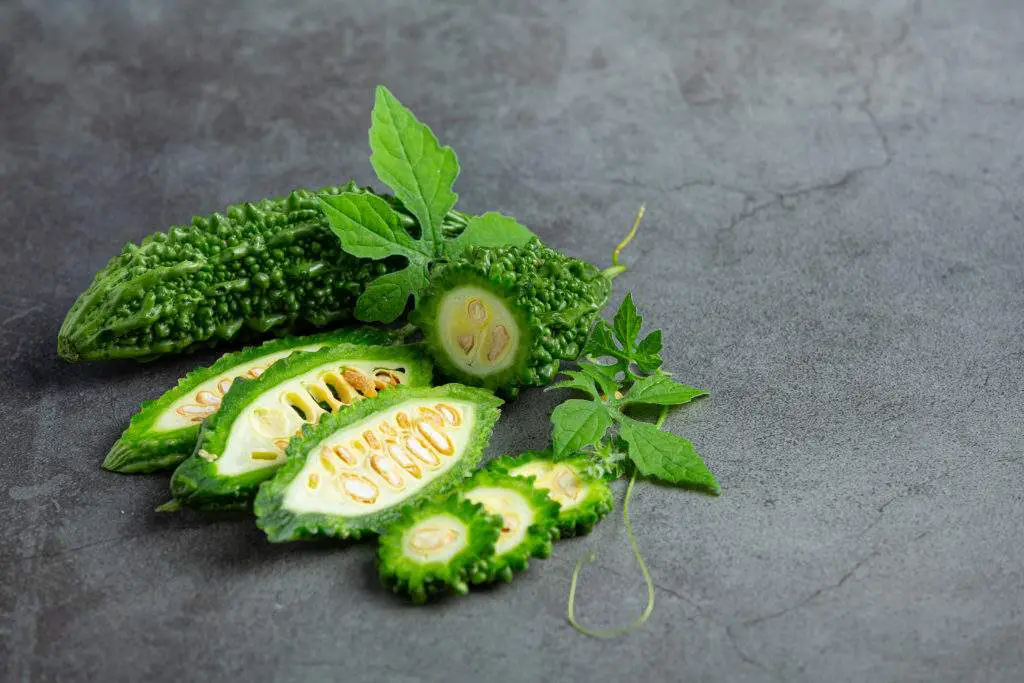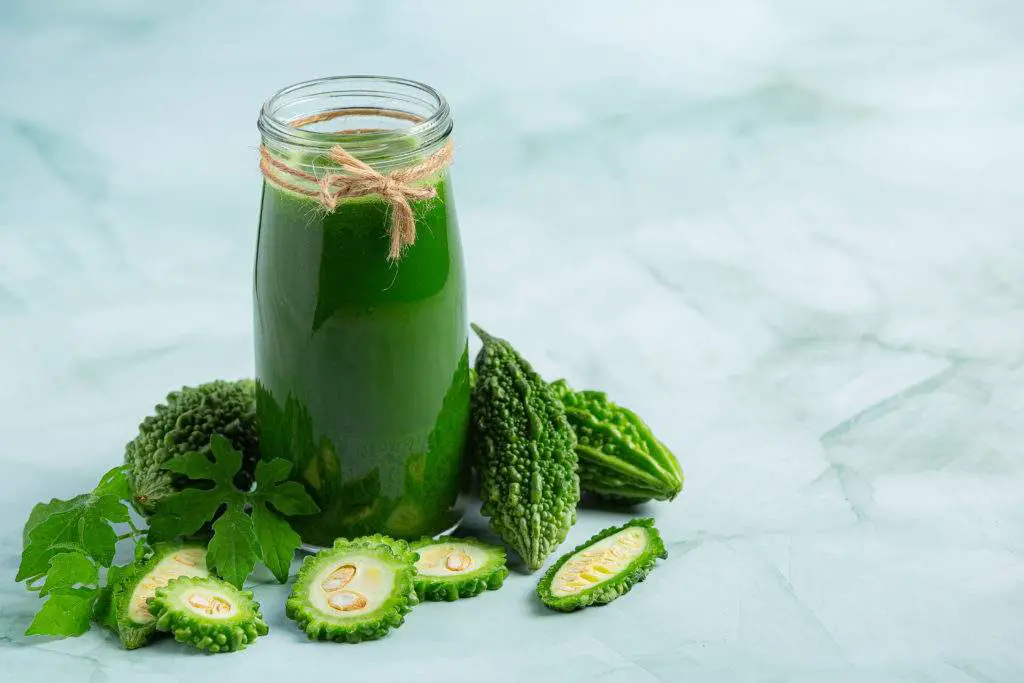Bitter vegetables may not be everyone’s cup of tea, but in the vibrant world of Bengali cuisine, they hold a cherished and unique place in our everyday meals. As a Bengali, I can attest to the fact that bitter gourd, lovingly known as “teto,” is a beloved and frequently used vegetable in our culinary repertoire. Its health benefits and versatility make it a prized ingredient that adds a distinct flavor and character to our dishes.
Splash of History: The significance of set courses in Bengali cuisine goes back ages, long before European concepts came into play. Our culinary traditions, rooted in ancient Ayurvedic principles, have always embraced the idea of a thoughtfully arranged meal. For example, according to the poetic verses of the Manasamangal, a midday meal in an upper middle-class Bengali Hindu household had a meticulously planned order: a bitter dish (Teto), a comforting liquid dish (Jhol), a medley of mixed vegetables (Ghanta), vibrant green leafy vegetables (Shaak), wholesome boiled lentils (Dal), succulent fish and meat, a tangy sour dish (Ambal), delightful rice-flour sweets (Pitha), and creamy milk-based treats (Payesh). And of course, every course was savored alongside a generous serving of steamed rice.
Health Benefits of Bitter Gourd
Diabetes Management: Bitter gourd helps regulate blood sugar levels and insulin secretion, making it beneficial for diabetic patients, particularly those with type-2 diabetes.
Weight Loss Aid: Bitter gourd aids weight loss by improving digestion, boosting metabolism, and providing a feeling of fullness due to its high fiber content. Its low-calorie nature makes it ideal for weight-conscious individuals.
Liver Health: Bitter gourd has liver-protective properties, promoting liver cell growth and overall liver health. Regular consumption of bitter gourd contributes to a healthy liver.
Skin Benefits: Bitter gourd contains antioxidants that help eliminate toxins, leading to healthier skin. It can improve acne-prone skin and promote a clearer complexion.
Eye Health: Bitter gourd is rich in vitamin A and other nutrients that support eye health and may help prevent age-related eye conditions such as cataracts.
Potential Cancer-Fighting Properties: Some studies suggest that bitter gourd may have anti-cancer properties, inhibiting the growth of cancer cells. It is important to note that bitter gourd is not a substitute for conventional cancer treatments.
Beyond its nutritional value, bitter gourd is deeply intertwined with our cultural and culinary traditions. It represents more than just a vegetable on our plates; it embodies balance and harmony. In Bengali cuisine, bitter dishes are used for cleansing the palate, aiding digestion, and setting the stage for the delightful courses that follow. Whether it’s the iconic Shukto, with its myriad of flavors, or the understated Neem Begun, bitters have an undeniable presence in our gastronomic heritage.
Some of the common Bitter Gourd dishes in Bengali Cuisine
Shukto: Shukto is a traditional Bengali meal made with an assortment of vegetables, including bitter gourd. It serves as the first course in a traditional Bengali meal and is lightly flavored. This dish is popular in both India’s West Bengal and Bangladesh.
Neem Begun: Neem Begun pairs bitter gourd with eggplants, balancing bitterness with the natural sweetness of the eggplant. It creates a delicious and slightly bitter preparation. It is frequently garnished with fresh coriander leaf to add a jing of flavor.
Tetor Dal: Tetor Dal is a lentil dish flavored with fried bitter gourd roundels, which provide a distinct flavor and texture to the dal. It is frequently combined with gourd to mask the bitterness, however this is optional.
Karela Bhaja: In Bengali, the word ‘Bahaja’ means fried. This is a fried Bitter Gourd dish, as the name implies, and is arguably the most regularly cooked Bitter Gourd dish in Bengali households. There are two ways to prepare Karela Bhaja. The first alternative is to slice the bitter gourd into large pieces, season with spices, and fry until crispy. The second method is to julienne the bitter gourd and potato before stir-frying it with onion, garlic, and chili.
Finding the Right Balance: Reducing Bitterness of Bitter Gourd while Cooking
To reduce the sharp taste of the bitter gourd, we use several tactics and tips in Bengali cooking. I’m including some of them here in case you’re new to cooking bitter gourd and don’t know how to properly prepare it.
- Proportions are critical, as even a small amount of bitter gourd or neem leaves can render a dish inedible. Following the recipes exactly can be the key to ensuring that the dish doesn’t end up being too bitter.
- Because of its exceptional ability to absorb flavors, boiled rice is frequently used to balance off excessive bitterness.
- Soaking the bitter gourd in rice water or salt water before cooking can also be effective to reduce its bitterness.
- Peel the bitter gourd and rub it with dry flour and salt. Let it sit for an hour, then wash it thoroughly before preparing the vegetables.
- Incorporate complementary ingredients like roasted peanut powder, guro chingri mach (small shrimps), kathaler bichi (jackfruit seed) or other spices to balance the bitterness and enhance the overall taste of bitter gourd dishes. For example, In the case of Shukto, a dash of milk can help reduce excessive bitterness, and a little ghee over the rice improves both flavor and the whole dining experience.
Moderation and Precautions:
Regardless of how many health benefits the bitter gourd has, it is never a good idea to ingest too much of anything. And bitter gourd is no different. To avoid stomach pain and gastrointestinal disorders, drink bitter gourd in moderation. Before introducing bitter gourd into their diet, people with specific medical concerns or taking certain drugs should see their healthcare provider.
Exploring the intricacies of Bengali cuisine allows a love of flavors as well as a profound connection to our heritage. It demonstrates our admiration for the culinary arts and the positive impact they have on our health. Bitter gourd and other bitter vegetables give a compelling dimension to our dishes, highlighting the rich tapestry of flavors that distinguishes Bengali cuisine. As a proud Bengali, I invite you to discover the delightful world of our culinary traditions. Embrace the bitter notes, relish the harmonious flavors, and savor the stories woven into every dish. Bengali cuisine is a celebration of flavors, culture, and the timeless connection between food and our way of life.







